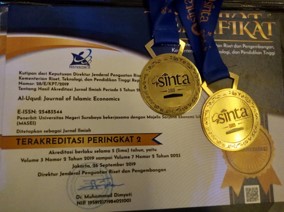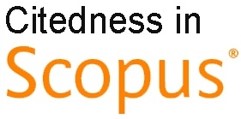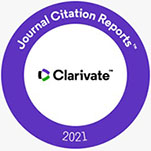Ashabiyyah and poverty alleviation: Insights from Minang, Aceh, and Batak communities in North Sumatra
DOI:
https://doi.org/10.26740/al-uqud.v9n1.p86-95Keywords:
Role of Ashabiyah, Poverty Alleviation, Minang, Acehnese, Batak Communities, North SumatraAbstract
This research explores multiple dimensions of poverty, highlighting key contributing factors such as economic conditions, inadequate wages, demographic influences, and limited market opportunities. A central finding reveals how Acehnese communities address poverty by developing micro, small, and medium enterprises (MSMEs) as productive economic units. Cultural approaches play a significant role, with different ethnic groups in Indonesia adopting distinct strategies: the Acehnese emphasize family-based support, the Minang prioritize cooperation, and Batak communities value wealth, lineage, and honor. The study underscores the importance of collaborative efforts between the government, society, and family networks in poverty alleviation, placing particular emphasis on familial economic support and mutual assistance.
References
Abdussalam Ismail Onagun dan Abdullah Han, “The Genesis of Cryptocurrency in Islamic Economics: Shariah analysis of HLC tokens”, (HLC Whitepaper), 6.
Al-Husaini AIS, Adamu Abubakar Ibrahim, Mohammad Fauzan Noordin dan H Mohd Mohadis,”Users Perception of Cryptocurrency System Application from The Islamic Views”, (IJASAI: International Journal of Islamic Applications in Computer Science and Technology. Vol. 7, Issue 1, March 2019), 15.
Abdussalam Ismail Onagun dan Abdullah Han, “The Genesis of Cryptocurrency in Islamic Economics: Shariah analysis of HLC tokens”, (HLC Whitepaper), 6.
Dowling, J., & Pfeffer, J. (1975). Pacific Sociological Association Organizational Legitimacy: Social Values and Organizational Behavior. Source: The Pacific Sociological Review, 18(1), 122–136.
Elasrag, H. (2019). Blockchains for Islamic finance: Obstacles & Challenges. Munich Personal RePEc Archive, 03, 1–39. https://mpra.ub.uni-muenchen.de/92676/
Härdle, W. K., Harvey, C. R., & Reule, R. C. G. (2020). Understanding Cryptocurrencies. Journal of Financial Econometrics, 18(2), 181–208. https://doi.org/10.1093/jjfinec/nbz033
Kamdzhalov, M. (2020). Islamic Finance and the New Technology Challenges. European Journal of Islamic Finance, 1–5. http://ezproxy.lib.swin.edu.au/login?url=http://search.ebscohost.com/login.aspx?direct=true&db=bth&AN=142574990&site=ehost-live&scope=site
Nisa, M. R., & Rofiq, M. (2021). Hukum Cryptocurrency Persfektif Fiqh Kontemporer. The Renewal of Islamic Economic Law, 2(2), 91–96.
Rahmanto, D., & Ulfah Anisariza, N. (2020). Penerapan Peraturan Perundang-Undangan Yang Melarang Penggunaan Produk Cryptosebagai Alat Pembayaran Maupun Subyek Komoditas Yang Bisa Diperdagangkan Melalui Bursa Berjangka Di Indonesia. ADIL: Jurnal Hukum, 11(2). https://doi.org/10.33476/ajl.v11i2.1648
Rosyadhi, R. I., & Salim, A. (2022). Islamic Economic Perspective and Potential of Zakah Imposement on Cryptocurrency. Journal of Islamic Economic Laws, 5(1), 61–83. https://doi.org/10.23917/jisel.v5i1.17204
Selcuk, M., & Kaya, S. (2021). A Critical Analysis of Cryptocurrencies from an Islamic Jurisprudence Perspective. Turkish Journal of Islamic Economics, 8(1), 137–152. https://doi.org/10.26414/a130
Widarto, A. R., Muharam, H., Wahyudi, S., & Pangestuti, I. R. D. (2022). ASEAN-5 and Crypto Hedge Fund: Dynamic Portfolio Approach. SAGE Open, 12(2). https://doi.org/10.1177/21582440221094612
Downloads
Published
How to Cite
Issue
Section
License

This work is licensed under a Creative Commons Attribution 4.0 International License.
CC BY 4.0 Abstract views: 191
,
Abstract views: 191
, PDF Downloads: 139
PDF Downloads: 139








